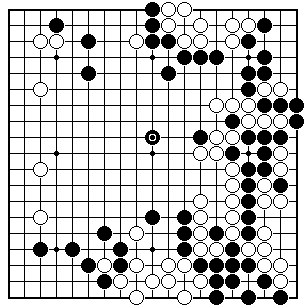 Here follows a mixed hypothesis I have devised out of some previous posts, Running Man, Toba Catastrophe and Aquatic Mind.
Here follows a mixed hypothesis I have devised out of some previous posts, Running Man, Toba Catastrophe and Aquatic Mind.Studying the conditions of the Japanese pearl divers gives good insight about how life could have been for an early human species living near the coast foraging from the sea. Interestingly the Japanese considers women better suited for diving as they can withstand the cold better with their extra layer of fat, also they were considered to be able to hold their breath longer.
Considering an early sea foraging hominid, maybe it was the women that were the primary sea foragers, diving for abalone and shellfish, and men kept more to the land?
When diving just adding a few feet to the maximum depth can make a huge difference regarding what can be foraged from the sea. This would probably cause their fur to gradually flatten and align itself nicely along the body to minimize drag and allow deeper dives.
Water drains heat to a much greater extent than air and keeping heat in is a major concern for marine mammals. Most marine mammals have kept their fur, and developed body fat. Same thing happened to the hominid group, they developed subcutaneous fat. To be able to dive and hold their breath for extended periods of time they needed to ditch panting as heat regulating mechanism. As they still spent great deal of time on land their eccrine glands developed into a water cooling mechanism.
We are now at ~70000 years ago. The supervulcano Toba erupts and throws many species into population bottlenecks. Life is really hard, especially at the top of the food chain. Many of the human species are decimated so bad that they eventually will go under, they were too dependant on finding prey inland. The semi-aquatic group were lucky though. Their extra income from the sea made them get through the most terrible years and turned them from being a very minor hominid group to the major group, about 2000 individuals.
Many years after the disaster the earth starts to recuperate. The suffocating clouds of ash and sulphur dioxide abides and the sun brings new life to the planet. Now many species find great opportunities arising. The semi-aquatic hominids find that hunting inland is easy. They find that they even can catch prey just by being stubborn and keep running. The prey gets overheated before they do because they have a more sophisticated cooling mechanism.
Spending less and less time in water they find that they don't need their fur anymore. Their fat keeps them warm at night and they can dissipate more heat without the fur when running. The little fur that is left shows the same streamlined pattern as when it was designed for gliding through water.
The gender differences regarding the sea foraging remains and is further accentuated by sexual selection.
Regarding the population bottleneck of the human species 70000 years ago we see that tracing the Y-Chromosome back in time we arrive at that Y-Chromosomal Adam lived between 60000 and 90000 years ago. This is also an indicator of a population bottleneck at this time. Fossil finds also seem to strengthen this hypothesis about a bottleneck.




























